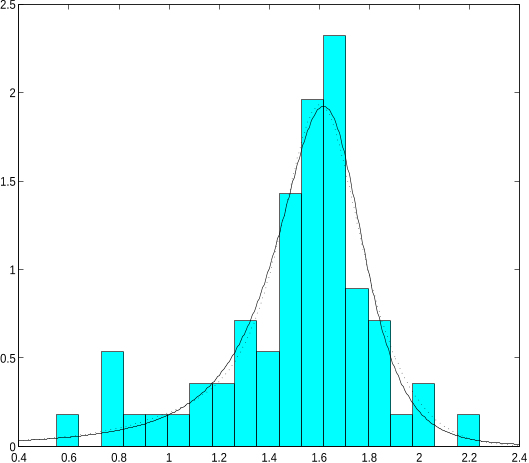













5 citations
4 citations
4 citations
...[5] applied to these data the beta generalized exponential (BGE) and the beta exponential (BE) distributions; Jones and Pewsey [29] modeled them using the sinh-arcsinh (SHASH) distribution and its normal (SHASH-N), normal-tailed (SHASH-NT) and symmetric (SHASH-S) sub-models; and, Ma and Genton [38] fitted them using flexible generalized skew-normal (FGSN) distributions by varying a parameter K ....
[...]
...On the other hand, Barreto et al. [5] applied to these data the beta generalized exponential (BGE) and the beta exponential (BE) distributions; Jones and Pewsey [29] modeled them using the sinh-arcsinh (SHASH) distribution and its normal (SHASH-N), normal-tailed (SHASH-NT) and symmetric (SHASH-S) sub-models; and, Ma and Genton [38] fitted them using flexible generalized skew-normal (FGSN) distributions by varying a parameter K ....
[...]
4 citations
4 citations
2,470 citations
...This representation has been used by Azzalini & Capitanio (2003) to define certain distributions by perturbation of symmetry....
[...]
...For K = 1, the pdf is always unimodal as was already noted by Azzalini (1985) for the univariate skew-normal distribution....
[...]
...The case K = 1 corresponds to Azzalini & Dalla Valle's (1996) bivariate skew-normal distribution, which cannot capture the bimodality....
[...]
...For K ¼ 1, the pdf is always unimodal as was already noted by Azzalini (1985) for the univariate skew-normal distribution....
[...]
...In particular, for ,il = ,B2 = /33 = & = 0, the pdf is exactly the bivariate skew-normal proposed by Azzalini & Dalla Valle (1996), and known to be unimodal (see Fig....
[...]
1,719 citations
1,478 citations
1,215 citations
...Finally, note that the stochastic representation of FSSdistributions follows from the stochastic representation of SS distributions described byWang et al. (2004), see also Azzalini & Capitanio (2003)....
[...]
...Similarly, multivariate distributions such as skew-t (Branco & Dey, 2001; Azzalini & Capitanio, 2003; Jones & Faddy, 2003; Sahu et al., 2003), skew-Cauchy (Arnold & Beaver, 2000) and other skewelliptical ones (Azzalini & Capitanio, 1999; Branco & Dey, 2001; Sahu et al., 2003) can be represented by…...
[...]
...Jones & Faddy (2003) and Azzalini & Capitanio (2003) fit two forms of skew-t distributions to these data....
[...]
...If each term has an odd order (all ks are odd), then the polynomial is called an odd polynomial, whereas if each term has an even order (all ks are even), it is called an even polynomial....
[...]